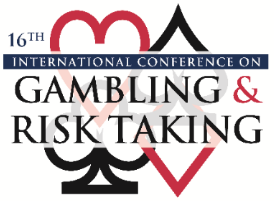Session Title
Session 3-1-F: Casino Operations Management Around the World
Presentation Type
Event
Location
The Mirage Hotel & Casino, Las Vegas, Nevada
Start Date
9-6-2016 8:30 AM
End Date
9-6-2016 10:00 AM
Disciplines
Artificial Intelligence and Robotics | Gaming and Casino Operations Management | Hospitality Administration and Management | Numerical Analysis and Computation | Numerical Analysis and Scientific Computing | Other Applied Mathematics | Statistics and Probability | Theory and Algorithms
Abstract
We present a mathematical framework and computational approach that aims to optimize the mix and locations of slot machine types and denominations, plus other games to maximize the overall performance of the gaming floor. This problem belongs to a larger class of spatial resource optimization problems, concerned with optimizing the allocation and spatial distribution of finite resources, subject to various constraints. We introduce a powerful multi-objective evolutionary optimization and data-modelling platform, developed by the presenter since 2002, and show how this software can be used for casino floor optimization. We begin by extending a linear formulation of the casino floor optimization problem to our multi-objective framework. We calculate the trade-off curve (or Pareto front), such that the “coin-in” objective cannot be improved upon without degrading the “win” objective, and vice-versa. We show that there exists a single solution on the Pareto front that minimizes the changes required to the existing mixture of slot machines. We then develop a generalized non-linear parameterized model for casino floor performance that takes into account the mixture of machines, their individual performances, and their location on the gaming floor relative to other machines, table games, and attributes such as walls and walkways. We show that performance data for individual machines can uniquely determine all model parameters, free of mathematical degeneracy, and we demonstrate that our model is robust against statistical noise. Once model parameters have been discovered, we use a specialized variant of the simulated annealing algorithm to produce optimized and realistic casino floor configurations.
Keywords
single and multi-objective optimization, casino floor optimization, non-linear data modeling, evolutionary computing, spatial resource optimization
Included in
Artificial Intelligence and Robotics Commons, Gaming and Casino Operations Management Commons, Numerical Analysis and Computation Commons, Numerical Analysis and Scientific Computing Commons, Other Applied Mathematics Commons, Statistics and Probability Commons, Theory and Algorithms Commons
Optimizing the Mix of Games and their Locations on the Casino Floor
The Mirage Hotel & Casino, Las Vegas, Nevada
We present a mathematical framework and computational approach that aims to optimize the mix and locations of slot machine types and denominations, plus other games to maximize the overall performance of the gaming floor. This problem belongs to a larger class of spatial resource optimization problems, concerned with optimizing the allocation and spatial distribution of finite resources, subject to various constraints. We introduce a powerful multi-objective evolutionary optimization and data-modelling platform, developed by the presenter since 2002, and show how this software can be used for casino floor optimization. We begin by extending a linear formulation of the casino floor optimization problem to our multi-objective framework. We calculate the trade-off curve (or Pareto front), such that the “coin-in” objective cannot be improved upon without degrading the “win” objective, and vice-versa. We show that there exists a single solution on the Pareto front that minimizes the changes required to the existing mixture of slot machines. We then develop a generalized non-linear parameterized model for casino floor performance that takes into account the mixture of machines, their individual performances, and their location on the gaming floor relative to other machines, table games, and attributes such as walls and walkways. We show that performance data for individual machines can uniquely determine all model parameters, free of mathematical degeneracy, and we demonstrate that our model is robust against statistical noise. Once model parameters have been discovered, we use a specialized variant of the simulated annealing algorithm to produce optimized and realistic casino floor configurations.


Comments
Attachment: PDF containing 27 slides